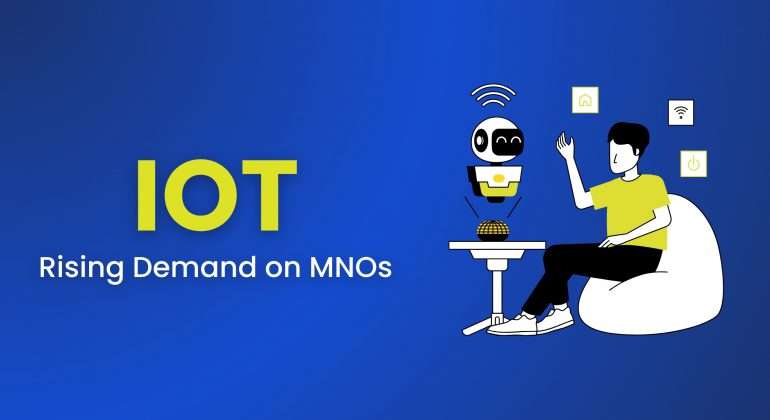The University of Leicester Computer Scientists have recently developed a novel technology that helps manage the demands of mobile networks with multiple users with Terahertz frequencies. With the massive explosion of the ‘Internet of Things’, this massive breakthrough can make a mark in the domain of the next generation of 6G mobile technologies. High speed and improved power consumption are two main aspects that bring this technology to the forefront.
A new study ‘IEEE Transactions on Communications’ explained this technology in detail. There has been a rapid increase in the demand for mobile telecommunication networks in the UK. As per Mobile UK, it is estimated that approximately twenty-five million devices are connected to mobile networks, and this number will rise exponentially by 2030. With the rapid growth of the ‘Internet of Things’ and the sudden boom in technology, there is strong competition to access these networks.
IOT: Revolutionising Connectivity and Efficiency Across Industries
IoT is often used for a network of devices that are interrelated and exchange data among other IoT devices connected to the cloud. These IoT devices have sensors, and software and can also include consumer objects and digitized machines.
IOTs are often used to enhance customer experience by improving decision-making and ease of operation. You can also transfer data easily through a network without the need for human interaction.
The IoT system works efficiently using multiple web-enabled devices that contain sensors, communication hardware, and software. Their main role is to collect, send, and process data that is exchanged between the devices. Here’s how they work-
- IoT devices connect to an IoT gateway and share data. This gateway acts as a center point where devices send data.
- The data can be sent to an edge device for analysis. This is done to reduce the volume of data to minimize bandwidth consumption.
- The devices can communicate with other devices without human intervention.
- The IoT devices can use artificial intelligence and learning aids, which can drastically improve the quality of life.
IoT applications include IoT-embedded devices in cars, homes, thermostats, lighting, etc. Many smart devices automate homes’ work on IoT. It can also be used in businesses that can make the best use of IoT with real-time updates of how the system works. By using IoT, companies can reduce labor costs, reduce waste and improve services and automate processes. in a nutshell, IoT offers all these benefits-
- Overall monitoring of business processes.
- Enhanced customer experience.
- Improves employee productivity.
- Money and timesaving.
- Generates more revenue.
Key Findings of The Study
To quadruple the effect of 5G, state-of-the-art telecommunication technologies have been established to fulfil the demands of the users. However, slower connections, high cost of energy consumption, a self-interference issues drastically affect the quality and efficiency of communication.
Considering all these issues a new technique, Multicarrier-Division Duplex (MDD) has been studied. This technique relies on the Fast Fourier Transform (FFT) processing that allows a receiver to get rid of the interference.
- To improve the quality of communication in different networks, the study proposed a novel technology to optimize sub carrier set and the number of access point clusters. When pilot testing was done on the technology, it was noticed that it outperformed the current technology of the industrial setting by a 10% reduction in power consumption.
- The focus is to reduce the computational complexity of the technique and optimize it to its full potential. The source code of the technique has been shared in the public domain for further research.
Throwing light on the study, Lead Principal Investigator, Professor Huiyu Zhou, the University of Leicester School of Computing and Mathematical Sciences said, “With the proposed technology, the technically advanced 5G and 6G networks consume less energy, require limited resource allocation, and fast device selection. The users will experience quick communication in addition to reduced power consumption.”
Professor Huiyu Zhou added, “The University of Leicester is the flag bearer in the development of AI solutions for access point clustering and device selection. Reinforcement learning allows us to search for the best practices in proposed wireless communication systems. It helps save resources and manpower. Without AI technology, we’ll be utilizing our time in device selection and rendering the best practices for the set-up.”
Ending Notes
The study is a part of the EU-funded 6G BRAINS project, which is engaged in enhancing capacity and reliability by allocating resources strategically while improving position accuracy. This AI-driven self-learning platform also plays a crucial role in reducing the latency response of the varying demands of industrial applications at a massive scale.
The funding for the project has been received from the European Union’s Horizon 2020 Research and Innovation Programme. Currently, the team is working on alleviating the computational complexity of the technology and optimizing it to its full potential as per the proposed techniques.
